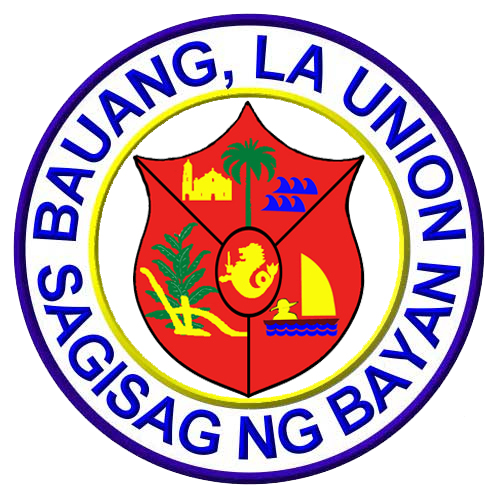BRIEF HISTORY
Barangay Baccuit Sur was discovered during Spanish time when our land was not yet politically apportioned into towns and provinces. It was named after the grass grown mostly in the place. They called this grass as (IBAKWE). It was still unnamed until a group of fishermen from what is now called the province of Ilocos Sur landed on the shore when they were caught by a strong winds/typhoon. When the fishermen were able to return to their homes in Ilocos Sur, they told their families about their new found land where eventually settled. One day the Spanish officer ask one of the men about the name of the place and he answered him IBAKWE thinking of the named of the grass growing of the placed. When the Spaniards went back to the town, he told the authority that he had gone to BAKWIT which he misheard from the fishermen. So when the Spaniards divided the land into towns and provinces, the Barangay Baccuit was recorded as one of the barrios of Bauang.
After the World War II, it was politically subdivided into Baccuit Sur and Baccuit Norte because of the fast increased in population and was headed by two Kapitan del Barrio
BARANGAY BACCUIT SUR
MISSION
“Making barangay baccuit sur a progressive with a clean ; healthy and peaceful and safe place to live in “.
BRIEF HISTORY
Barangay Baccuit Sur was discovered during Spanish time when our land was not yet politically apportioned into towns and provinces. It was named after the grass grown mostly in the place. They called this grass as (IBAKWE). It was still unnamed until a group of fishermen from what is now called the province of Ilocos Sur landed on the shore when they were caught by a strong winds/typhoon. When the fishermen were able to return to their homes in Ilocos Sur, they told their families about their new found land where eventually settled. One day the Spanish officer ask one of the men about the name of the place and he answered him IBAKWE thinking of the named of the grass growing of the placed. When the Spaniards went back to the town, he told the authority that he had gone to BAKWIT which he misheard from the fishermen. So when the Spaniards divided the land into towns and provinces, the Barangay Baccuit was recorded as one of the barrios of Bauang.
After the World War II, it was politically subdivided into Baccuit Sur and Baccuit Norte because of the fast increased in population and was headed by two Kapitan del Barrio.
BARANGAY QUINAVITE
VISION
It is our Vision to have Progressive/ Peaceful Community where the residents have unity thru the leadership of the Elected Barangay Officials
MISSION
To promote cooperation among residents
To establish a progressive Barangay Quinavite
To uplift the standard of living of every resident
To contribute for the development of our community
BRIEF HISTORY
Quinavite is one of the oldest barrio in the municipality of Bauang. On the southern boundary and along the McArthur Highway there was a cemented bridge which was constructed. That was how the barangay got its name.
The bridge was long been constructed by the residence under the direct supervision of the Spanish colonial government. Since the materials were made of dried bricks (ladrillo), lime, sugar, dye and tree saps the combination was called “Cabite”. So when it was finished the people called it “Rangtay” a Cabite or Kabite a Rangtay. When it was separated, it was then called barrio Quinavite.
Barangay Dili and Disso-or was once part of Barangay Quinavite.
BARANGAY PUGO
BRIEF HISTORY
Old town folks say that ages ago, a flock of more than a thousand quails lived together in this place. This place still has no given name though there were already people living here.
There was once a foreigner who happened to visit this place. He asked the Filipino the name at the same time pointing at this place. The Filipino, who cannot fully understand foreign language and knowing that the foreigner was pointing at the quail birds answered “pugo”, the name of the birds. Thinking that the foreigner’s query was answered, the foreigner then called this place PUGO. From that time on, this place was called PUGO.
BARANGAY TABERNA
BRIEF HISTORY
It derived its name from the Spanish word “Tavern” which means a guest house with a bar. As related by the elders who were interviewed, land area of Taberna occupies more than 500 meters as of the present in the west until the sea took it over. Along the seashore stretches a road that interconnects the adjacent Barangay Pugo in the south and Barangay Baccuit Sur in the north. An inter loop can be seen before the road moves to the north. There was a “tarcena” which was the only establishment made of bamboos and coconut leaves along the seashore. It is in the “tarcena” that they buy or barter their trade. Fishing is the major economic livelihood of the people then.
